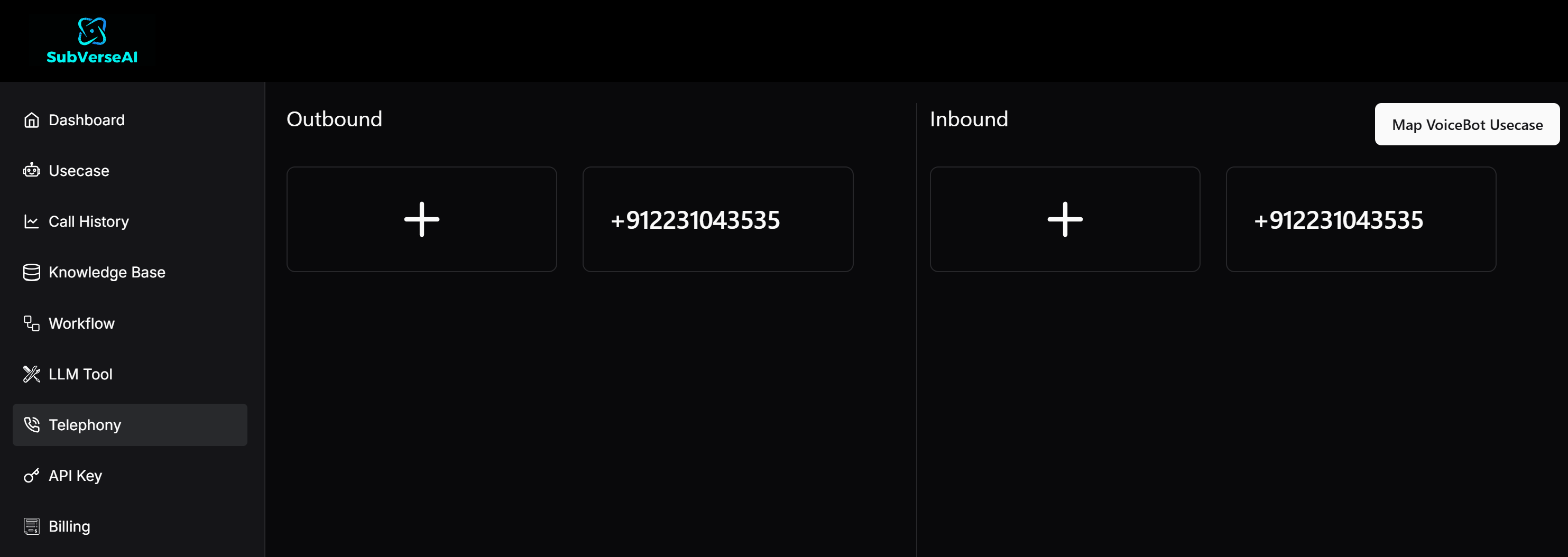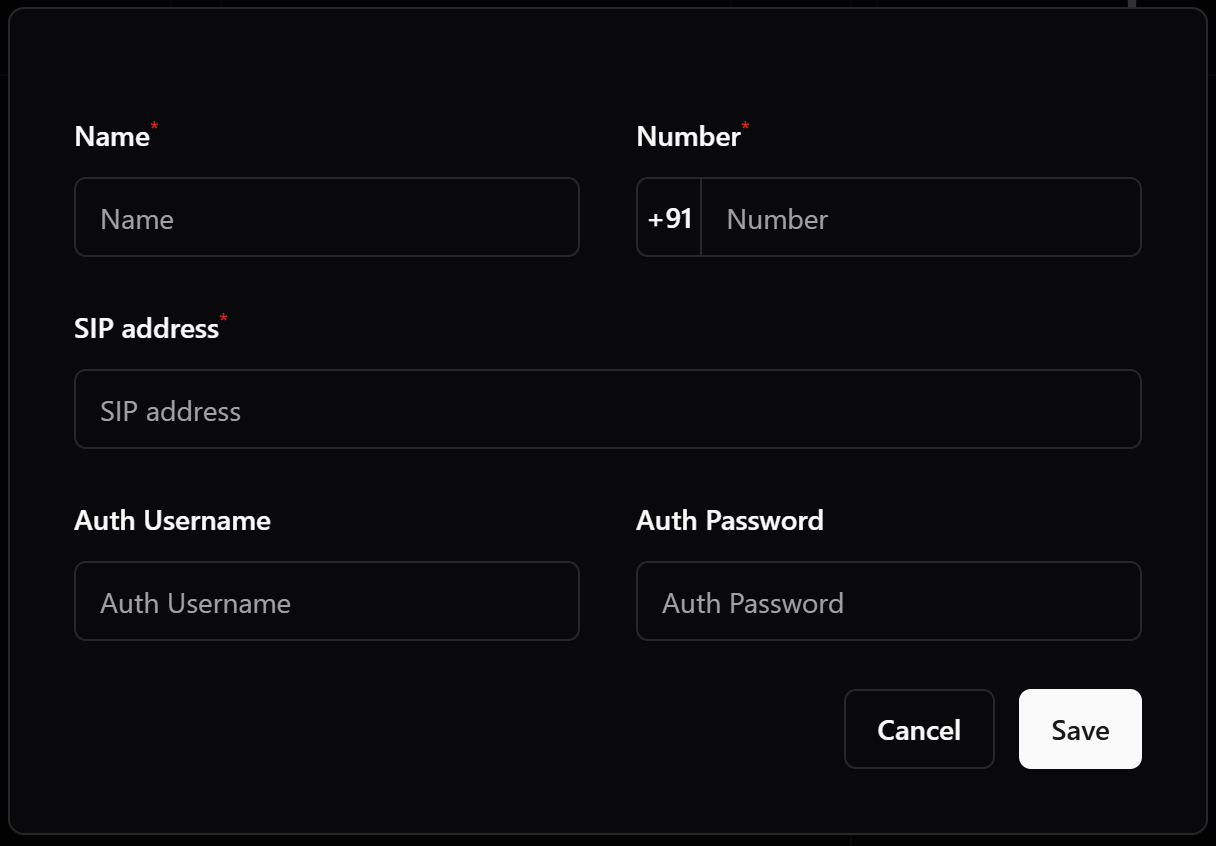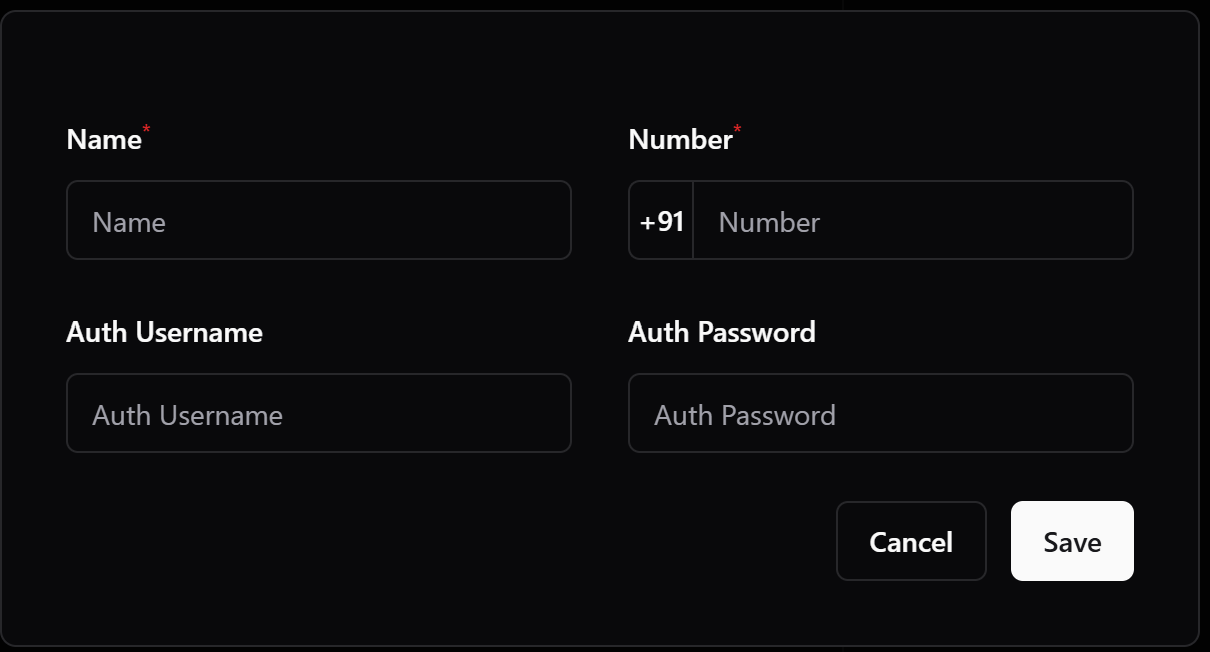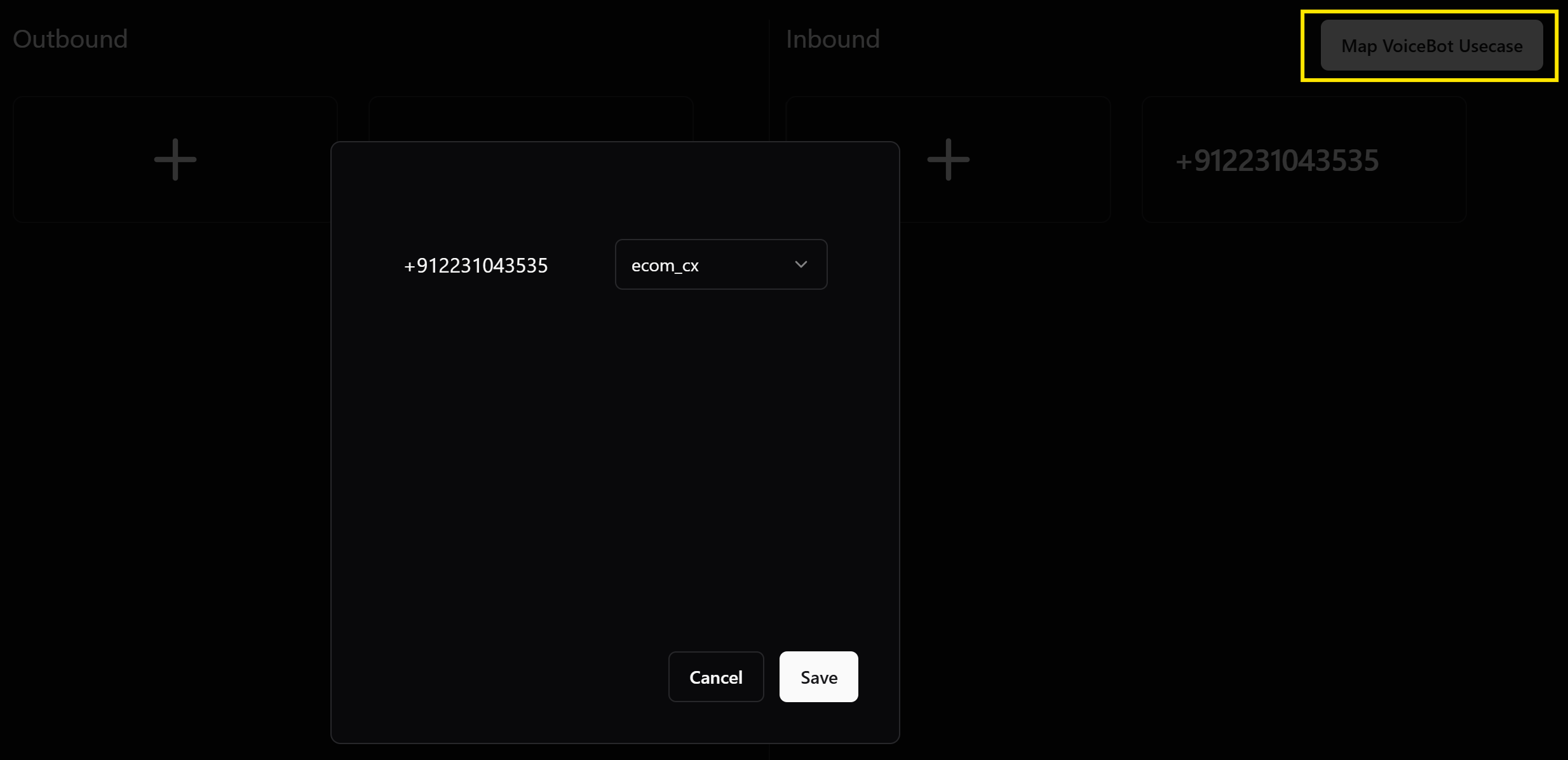Integrate your telephony system with SIP trunking to handle inbound and outbound calls through your voice agent.

Outbound trunk
Setup your voice agent to make outgoing calls from your number.
Create a SIP trunk
- Buy a virtual number from your cloud telephony service provider.
- There are 2 methods for authentication: IP whitelisting, or auth credentials.
- Currently SubVerse SIP server does not have a static IP, so if you opt for the IP route, you need to whitelist all the IP addresses in the range like this:
0.0.0.0/1, 128.0.0.0/1.
- It is recommended that you also setup Auth Username and Password for secure communication.
- Refer to the configuration guides for Twilio, Telnyx, Vonage, Plivo.
Link to the voice agent

- Provide a Name for the connection.
- Input the Phone Number with country code.
- Enter the SIP Address or Termination URI provided by your telephony provider.
- Provide Auth Username and Auth Password for authentication, leave blank if not configured.
- You can start using this number for making calls through voice agents interface, workflows, or call APIs.
Inbound trunk
Setup your voice agent to accept incoming calls on your number.
Create a SIP trunk
- Buy a virtual number from your cloud telephony service provider.
- Configure an inbound SIP trunk with Origination URI as
4ers9l0ayi7.sip.livekit.cloud.
- It is recommended that you also setup Auth Username and Password for secure communication.
- Refer to the configuration guides for Twilio, Telnyx, Vonage, Plivo.
Use 4ers9l0ayi7.india.sip.livekit.cloud for region pinning to India SIP servers.
Link to the voice agent

- Provide a Name for the connection.
- Input the Phone Number with country code.
- Provide Auth Username and Auth Password for authentication, leave blank if not configured.
- Click on Map Voicebot Usecase and select the voice agent you want to use while accepting the calls.
Every time you update the voice agent use case, make sure to map it again to the number to ensure it has the updated context and settings.




